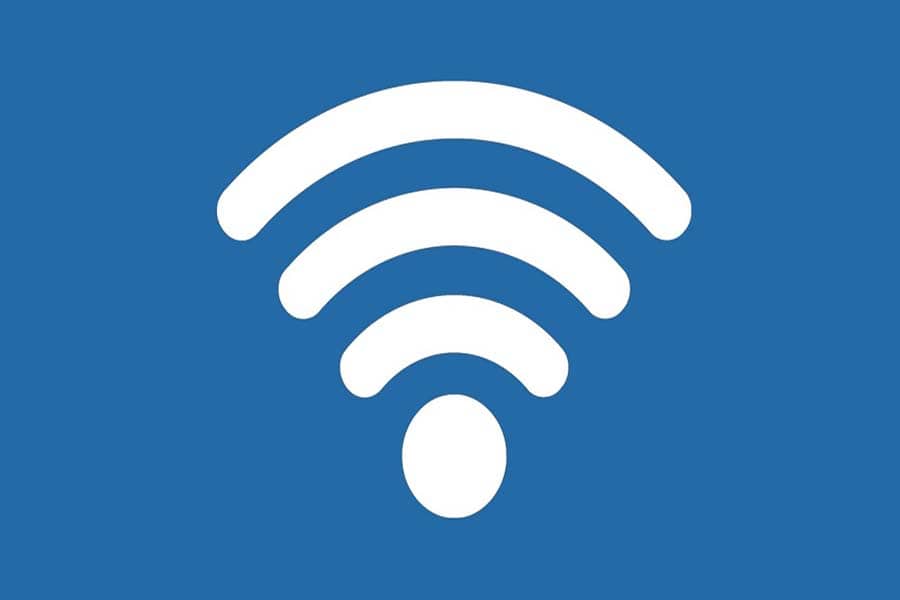
In an increasingly connected world, our reliance on WiFi networks for work, communication, and entertainment is undeniable. However, when your WiFi suddenly declares “Weak Security,” it’s not just a minor inconvenience – it’s a red flag for potential security breaches and data vulnerabilities. This article delves into the reasons behind the ominous “Weak Security” warning, explores the risks associated with inadequate WiFi security, and offers practical solutions to fortify your network against potential threats. Understanding why your WiFi says “Weak Security” is the first step towards ensuring your digital life remains protected and your online experience stays seamless.
Why Does my wifi say weak security?
Your WiFi network displaying a “Weak Security” warning typically means that your network’s security settings are not robust enough to protect it from potential threats. It could be due to outdated or insecure security protocols, a weak or easily guessable password, outdated router firmware, or misconfigurations. Addressing this issue is crucial to prevent unauthorized access, data breaches, and other security risks. To resolve it, consider updating your security protocol, using strong passwords, keeping your router firmware up-to-date, and customizing router settings for enhanced security.
Common Causes Of “Weak Security” Warning
The “Weak Security” warning on your WiFi network can be attributed to several common causes, including:
Outdated or Insecure Security Protocols: One of the primary reasons for the “Weak Security” warning is the use of outdated or insecure security protocols. For instance, protocols like WEP (Wired Equivalent Privacy) and even older versions of WPA (Wi-Fi Protected Access) have known vulnerabilities that attackers can exploit. Such protocols need the robust encryption and security features of more modern options.
Weak or Easily Guessable Passwords: The strength of your WiFi network’s security is directly tied to the complexity of your password. Using a weak or easily guessable password makes your network vulnerable to brute-force attacks or dictionary attacks. Common passwords, such as “password123” or “admin,” should be avoided, as they are readily guessable.
Router Firmware and Software Updates: Routers, like any other technology, require regular updates to patch security vulnerabilities and improve performance. Neglecting to update your router’s firmware and software can lead to vulnerabilities that attackers can exploit. Manufacturers release updates to address known security issues, so staying current is crucial.
Misconfigurations and Default Settings: Misconfigurations or leaving default settings unchanged is another common issue. Attackers often exploit default usernames and passwords that come with routers, making it relatively easy for them to gain access. Failing to customize security settings, such as enabling WPA2/WPA3 encryption, can weaken your network’s defenses.
Outdated Hardware: Aging WiFi routers may need to support the latest security standards and features. Newer routers offer better security options and encryption methods, making them more resistant to attacks. Consider upgrading to a more secure router if you’re using outdated hardware.
Mixed Security Protocols: Sometimes, the “Weak Security” warning may appear if your network is configured with a mix of security protocols. For instance, having some devices on WPA2 and others on WPA3 can create compatibility issues and potentially weaken overall security. It’s advisable to ensure uniform security settings across all devices.
Lack of Network Segmentation: Failing to segment your network can lead to security vulnerabilities. If all devices share the same network, a breach on one device can compromise the security of all connected devices. Creating a guest network and isolating IoT devices from your leading network can enhance security.
Failure to Disable WPS (Wi-Fi Protected Setup): WPS, while designed for convenience, can introduce security risks. Attackers can exploit vulnerabilities in the WPS feature to gain unauthorized access to your network. Disabling WPS can bolster your network’s security.
Interference from Neighboring Networks: Interference from neighboring WiFi networks can sometimes weaken your network’s security. If multiple networks broadcast on the same channel or use overlapping frequencies, it can lead to signal interference and potentially open up vulnerabilities. Adjusting your router’s channel settings can help mitigate this issue.
Physical Security Concerns: Neglecting physical security can also impact network security. If unauthorized individuals can physically access your router or networking equipment, they may tamper with settings or connect to your network without permission. Ensure your router is placed securely, and consider using locks or passwords to protect physical access.
Types Of Wifi Security Protocols
WiFi security protocols are essential for protecting your wireless network from unauthorized access and potential security breaches. There are several types of WiFi security protocols, each offering different levels of security. Here are the most common ones:
- WEP (Wired Equivalent Privacy): WEP was one of the earliest WiFi security protocols but is now considered highly insecure. It uses a static encryption key that can be easily cracked using readily available tools. It’s strongly recommended to avoid using WEP due to its vulnerabilities.
- WPA (WiFi Protected Access): WPA was introduced as an improvement over WEP. It offered more robust encryption and security features. However, the initial version, WPA, is also susceptible to some attacks. It’s preferable to use more advanced versions.
- WPA2 (WiFi Protected Access 2): WPA2 is today’s most widely used WiFi security protocol. It uses the Advanced Encryption Standard (AES) encryption algorithm, which is considered highly secure. WPA2 is much more robust than WPA and WEP, making it a good choice for securing your network.
- WPA3 (WiFi Protected Access 3): WPA3 is the latest and most advanced WiFi security protocol available. It offers even stronger encryption and security features compared to WPA2. WPA3 enhances protection against brute-force attacks and provides more secure essential exchange methods. It is recommended for the best security.
- Open (No Security): This is not a recommended security protocol because it provides no encryption or protection. An open network allows anyone within range to connect without authentication, making it highly vulnerable to unauthorized access.
- WPS (Wi-Fi Protected Setup): While not a standalone security protocol, WPS is a feature that simplifies connecting devices to a WiFi network. However, it can introduce security vulnerabilities and should be disabled, as attackers can exploit weaknesses in the WPS system to gain unauthorized access.
- Enterprise Protocols (EAP, 802.1X): These protocols are typically used in corporate or business environments. They offer a high level of security by requiring user authentication through methods such as certificates or username/password combinations. This ensures that only authorized users can access the network.
How To Diagnose Weak Security?
Diagnosing weak security on your WiFi network is a critical step in protecting your data and privacy. Here’s a detailed explanation of how to go about diagnosing weak security:
Access Your Router Settings:
Begin by accessing your router’s configuration settings. You can type your router’s IP address (common ones include 192.168.0.1 or 192.168.1.1) into a web browser’s address bar. You may need to log in with your router’s admin username and password.
Check the Security Protocol:
Within your router settings, navigate to the wireless security section. Here, you can identify the security protocol currently in use. Ensure that you’re using a modern protocol like WPA2 or WPA3. If it’s set to WEP or an outdated option, it’s a sign of weak security and should be changed immediately.
Evaluate Your Password Strength:
Review the network password (the Pre-Shared Key or passphrase). Ensure it is solid and unique, combining upper and lower-case letters, numbers, and special characters. Weak or easily guessable passwords are a common cause of security vulnerabilities.
Check for Firmware Updates:
Explore the router settings for any available firmware updates. Outdated firmware can have known security flaws, and manufacturers release updates to patch these vulnerabilities. If an update is available, install it promptly to strengthen your router’s security.
Look for Misconfigurations:
Inspect the router settings for any misconfigurations. Common issues include leaving default usernames and passwords unchanged or enabling insecure features like WPS. Ensure that default credentials are changed and unnecessary features are disabled.
Verify Guest Network Settings:
If your router supports a guest network, review its settings. Ensure it is correctly configured with a separate password and limited access to your leading network to prevent unauthorized users from gaining access.
Check for Connected Devices:
Review the list of devices connected to your network. If you notice unfamiliar devices or unauthorized users, immediately change your network password and disconnect these devices.
Utilize Security Tools:
There are various online tools and apps available that can help assess your network’s security. These tools can identify vulnerabilities, weak passwords, and other potential issues. Consider using them for a more in-depth analysis of your network’s security.
Bottom Line
when your WiFi displays a “Weak Security” warning, it’s not a message to be ignored. Understanding the underlying causes, such as outdated security protocols, weak passwords, or misconfigurations, is the first step in strengthening your network’s security. By taking proactive measures like upgrading to modern security protocols, creating strong passwords, keeping your router updated, and customizing settings, you can ensure your WiFi network remains a fortress against potential threats. Prioritizing the security of your WiFi network is crucial in our interconnected world, where safeguarding your data and privacy is paramount. Don’t wait – take action today to fortify your WiFi security and enjoy a safer online experience.


